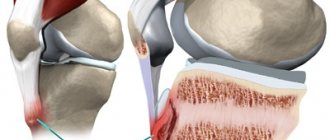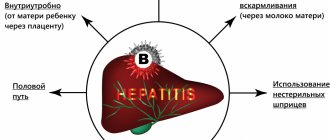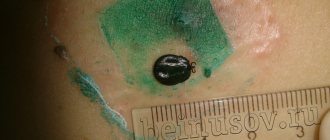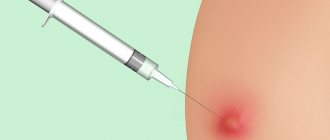Every year, with the onset of summer, we try to carve out a few weeks and go to the sea, swim in warm water, and soak up the sun. To do this, we most often choose resorts in hot countries abroad, because the climate is suitable, food, and fresh fruit are all year round. However, over the past 10 years, we have all received more and more reports about our compatriots being infected with such an incomprehensible disease as the Coxsackie virus. Moreover, entire families of Ukrainians get sick, and the symptoms are sometimes very, very unpleasant – fever, headache, severe diarrhea. DILA experts will tell you what kind of virus this is and how to recognize it.
What is this? Coxsackie viruses belong to the group of enteroviruses that reproduce in the human gastrointestinal tract.
There are more than 80 types of enteroviruses. All of them die when exposed to temperatures above 50 ° C (at 60 ° C - in 6-8 minutes, at 100 ° C - instantly), they are quickly destroyed upon contact with chlorine-containing preparations, when exposed to ultraviolet radiation, during boiling and drying. Despite this, enteroviruses are able to survive at a temperature of 37 °C for 60-65 days and persist in water for a long time. This is precisely what explains outbreaks of morbidity at resorts. Frozen enteroviruses remain active for several years, when storing contaminated products in the refrigerator - for several weeks, and at room temperature the viruses are active for several days. They can withstand repeated freezing and thawing without losing their activity.
Viruses begin to multiply in the epithelium of the gastrointestinal tract. From the gastrointestinal tract, particles enter the blood, leading to damage to internal organs, where the second wave of reproduction begins. Enteroviruses can be detected in the respiratory tract secretions and feces of infected people, and sometimes in the blood and cerebrospinal fluid.
In addition to Coxsackie viruses A1-A21, A24 and B1-6, the enterogroup also includes:
- ECHO viruses;
- enteroviruses 68-71, 73-91 and 100-101;
- polioviruses types 1-3.
Infections are often transmitted through direct contact with respiratory secretions or stool, but transmission can also occur through contaminated environmental sources (such as water). Vertical (transplacental) infection of the fetus from the mother during pregnancy is possible. The seasonality of incidence is summer-autumn. The bulk of the sick are children and young people.
How does it manifest? The incubation period (from the moment of infection to the appearance of the first signs) lasts from 3 to 7 days. In general, the symptomatic picture of enterovirus infections is manifested by vomiting, nausea, and diarrhea. The disease begins with a fever of 39-40 degrees, headaches, general weakness, sleep disturbances and loss of appetite. There may be redness of the skin of the face and neck, around the eyes, as well as rashes in the form of spots and nodules throughout the body.
There are different forms of the disease with different clinical manifestations:
- Serous meningitis . With enterovirus infection, it has a clear picture with meningeal symptoms, clearly manifested in the form of fever and disappearing from the 3rd week of the disease. The duration of fever is about 2 weeks. Painful sensations are concentrated in the frontal part of the head. The fever may be accompanied by a measles-like rash. Catarrhal reactions often occur: lacrimation, photophobia, liquid discharge from the nose.
- Herpetic sore throat . In fact, the herpes virus has nothing to do with it, it’s just that the rashes are similar to herpes, that’s why the manifestations are called that. The back wall of the pharynx becomes granular, on the reddened palatine arches, from the very beginning of the disease, rashes appear in the form of nodules, which then develop into blisters and ulcers with a red rim. There is pain when swallowing, thickening and enlargement of the lymph nodes. The outcome of herpetic sore throat in most cases of enterovirus infections is favorable.
- Intestinal form . It occurs in the form of gastroenteritis with an increase in body temperature to 39˚C. This form is characterized by the presence of dyspeptic syndrome, which manifests itself as foamy diarrhea about 5-7 times a day with admixtures of mucus and greens, as well as a specific unpleasant odor. Diarrhea is accompanied by repeated vomiting, bloating, rumbling, and diffuse abdominal pain. But there are no intestinal spasms. The duration of the illness is up to 2 weeks. Children are more difficult to tolerate the intestinal form of the disease: they suffer longer from abdominal pain and digestive disorders (they are characterized by a second wave of symptoms); rapid dehydration of the body due to frequent diarrhea is dangerous for children.
- Myocarditis and pericarditis . They develop almost simultaneously, since the causative viruses equally affect the tissues of the heart - the pericardium (pericardial sac) and the heart muscle itself (myocardium). At first the disease is very similar to ARVI, and after a week pain in the heart area, discomfort in the chest, general weakness and fever join the clinical manifestations.
- Conjunctivitis . Manifestations: pain in the eyes, fear of bright light, lacrimation, swelling of the eyelids and sclera. The discharge from the eyes at the initial stages is cloudy, with a yellowish tint, but over time it becomes purulent. After a few days of lucidity, the spinal cord may be affected and fever may develop.
- Myalgia – muscle pain. The intensity of pain may increase during movement, and the duration of pain can range from 30 seconds to several minutes. Myalgia usually lasts about 7-8 days.
A feature of enterovirus infections is that different clinical forms of the disease can be associated with representatives of the same serotype, and similar clinical symptoms can be caused by different serotypes of enteroviruses. Only some serotypes of enteroviruses are characterized by certain symptoms that are not observed during infection with other varieties. Many of the clinical manifestations are not specific to enteroviral infections and can also occur in other infectious diseases.
If you suspect an enterovirus infection, you should immediately prescribe specific tests of biological secretions, since the period of maximum isolation of the virus from the body is the first week of the disease. If not detected in time, enterovirus infection continues to develop and can lead to serious complications - meningitis, encephalitis, pulmonary edema and even paralysis. Advanced infection in adults and especially children can lead to death or significant brain damage and disability.
In the last 20 years, so-called “minor” enterovirus infection has been increasingly detected in children. It is characterized by mild fever, weakness, muscle pain, it often goes away on its own after 3-4 days and does not cause pronounced changes in individual organs.
General information
Coxsackie virus and ECHO virus belong to the group of enteroviruses and are the main causative agents of enterovirus infection (EVI).
In recent years, there has been a tendency towards activation of Coxsackie viruses and an increase in infectious diseases caused by enteroviruses. The incidence rates of EVI in the CIS countries vary between 11.5-16.2/100 thousand population. The majority of cases are children (90%). The specificity of EVI is the polymorphism of clinical manifestations, which is due to their ability to affect various tissues/organs (kidneys, heart, central nervous system, lungs, liver and others), long-term virus carriage, the presence and wide distribution of asymptomatic forms, the absence of a clear pronounced dependence of nosological forms on the serological type of the pathogen , as well as the lack of specific methods of prevention, which makes enterovirus infections practically uncontrollable.
Diseases more often occur in the form of sporadic morbidity, but every 3-4 years epidemic outbreaks caused by different serotypes of Coxsackie viruses are recorded around the world. Every year, the proportion of certain infecting serotypes of the virus changes significantly, which many authors explain by the accumulation of a “critical mass” of susceptible children, which is necessary to maintain the epidemic process. It is also important that one serotype of the Coxsackie virus in adults and children can cause clinically completely different diseases (even at the same time in the same family), while at the same time different serotypes of the virus can cause diseases whose symptoms are very similar, which complicates the diagnosis and treatment of patients .
Enterovirus infection Coxsackie in the everyday lexicon is called “Turkish flu” due to partial similarity with the symptoms of classic flu and the introduction of the Coxsackie virus into the CIS countries by people vacationing at resorts in Turkey.
Pathogenesis
For Coxsackievirus A and B, the entry gates are the mucous membranes of the oral cavity, upper respiratory tract and intestines. Enteroviruses freely overcome the “gastric barrier” and penetrate the cells of the small intestinal mucosa. Subsequently, the process of virus replication occurs in the cells of the intestinal epithelium, lymphoid tissue and mesenteric lymph nodes. The virus then enters the bloodstream and causes primary viremia. The Coxsackie virus exhibits the greatest tropism for cells of the central nervous system/muscle tissue, but a variety of organs are also involved in the pathological process.
Dissemination of the pathogen occurs in the heart, liver, lungs, kidneys, eye vessels, pancreas, where it multiplies and accumulates. Clinical symptoms, severity and outcome of the disease are determined by a number of factors - the biological properties of the virus serotypes, their tropism, the state of the humoral/cellular immunity of the human body. Swelling, inflammation and areas of necrosis develop in the affected organs.
The stages of pathogenesis are shown schematically in the figure:
Stages of pathogenesis of the Coxsackie virus
Persons who have recovered from the disease develop long-lasting (over several years) type-specific immunity.
Forecast of the course of the disease and recovery
Timely consultation with a doctor and correct diagnosis of the virus increases the likelihood of a quick recovery without serious complications to the body. In case of a mild infection, the person returns to the usual rhythm of life after 3 days. In more severe cases, recovery lasts up to two weeks, in rare cases, for example, with manifestations of encephalitis - up to 6-8 weeks.
With properly selected therapy, the child’s recovery occurs in approximately 10-14 days. After two weeks, the last lesions and blisters on the skin heal. Additionally, in the period after the end of the active stage of the disease, it is useful to give the baby vitamin complexes containing vitamins A, , , and B. For six months after recovery, it is not recommended to give the child any vaccinations.
There are several possible outcomes of the disease:
- the person completely gets rid of the virus and recovers;
- nerve cells and organs retain virus particles for some time;
- a person becomes a carrier of the virus.
Classification
There is no unified classification of enteroviruses due to the wide polymorphism of clinical symptoms. In the Russian Federation, a classification according to the type of disease has been adopted.
- Typical forms of enterovirus infection: herpangina , enteroviral fever , acute respiratory diseases, exanthema , epidemic myalgia , aseptic serous meningitis , encephalomyocarditis , hepatitis , myocarditis , mesadenitis , meningoencephalitis , gastroenteric form, hemorrhagic conjunctivitis , vesicular ny stomatitis .
- Atypical forms of enterovirus infection: erased, inapparent.
According to the current: light, medium and heavy.
Causes
Coxsackie viruses of group A (serotypes 1-22, 24) and group B (serotypes 1-6) are the etiological factor of a number of enteroviral infections.
Morphology and biological properties
Coxsackie enterovirus is a small RNA virion (28 nm) with cube-shaped symmetry and the ability to form crystals inside affected cells. Virion capsid without envelope. The appearance of the Coxsackie virus is shown in the figure below.
Coxsackievirus B4
Based on their antigenic structure, Coxsackie viruses are divided into two large groups: A-26 and B-6 serological types. The virus is highly resistant in environments and on environmental objects. But they are quickly inactivated at temperatures exceeding 50 ° C, they can persist for 2 months at a temperature of 37 ° C, survive for a long time in river/tap water, but especially for a long time in waste water.
Stable in acidic environments (pH 3-5). The activity of enteroviruses remains for several years even when frozen, and when stored in a refrigerator at a temperature of +4-6°C - for several weeks. At the same time, repeated freezing and subsequent thawing does not lead to a decrease in their activity. They quickly die when dried, under ultraviolet irradiation and when exposed to formaldehyde , even in small concentrations. They are destroyed by boiling (at 100 °C - instantly, 60 °C in 6-8 minutes).
Epidemiology
Coxsackie viruses are ubiquitous: their reservoir in nature is water, soil, and food. In the human population, the human body. The main epidemiological feature is the widespread ability to form healthy virus carriers in the human body with a long period of virus release into the external environment (up to 3-6 weeks). Virus carriage in healthy individuals varies between 17-40%. Among children, the percentage of virus excretors reaches 20%, and at the age of under 1 year it is even higher - 32.6%. This feature contributes to the survival of the virus even in conditions of high levels of immunity in the population.
The level of natural immunity increases with age, reaching 90% already at the age of 5-10 years. Among the adult population, antibodies to the most common Coxsackie serotypes are found in 30-80% of the population. At the same time, the seropositivity of the human population is much higher in regions/countries/cities with a low social and hygienic standard of living. Some authors even consider these data as an indicator of the standard of living of the population and even the effectiveness of anti-epidemic protection.
The source of infection is a sick person, a recovering person or a virus carrier. Infection with Coxsackie viruses occurs throughout the year, but in the northern hemisphere the peak incidence of EVI occurs in the summer-autumn season. In warm regions and the tropics, the incidence does not have a pronounced seasonality. EVI affects people of all age groups, but incidence rates are inversely proportional to age. About 75% of EVI cases occur in children under 15 years of age, and children under 1 year of age get sick several times more often than older children and adults. Males get sick more often.
The leading mechanism of transmission is fecal-oral. Its implementation is carried out by water, food and household contact. Airborne and transplacental (from mother to fetus) routes are possible. The main condition for the implementation of the infection transmission mechanism is poor sanitary living conditions. The infection rate of children living in unfavorable sanitary conditions can reach 50%.
The most important way for Coxsackie viruses to spread is through contact with another person's contaminated hands and objects, followed by inoculation of the virus through the nose, mouth or eyes, and through contaminated food and water. Those infected are most contagious during the first week of illness.
Symptoms of the Coxsackie virus
The incubation period of the Coxsackie virus varies for different nosological forms and can range from 2 to 35 days. The average incubation period is 7-10 days. The clinical symptoms of the Coxsackie virus in adults, as well as the symptoms of the Coxsackie virus in children, are extremely varied.
Coxsackie virus in children. Hand-foot-mouth syndrome
Among the main clinical syndromes caused by the Coxsackie virus of various serotypes are:
- Coxsackie A viruses: herpangina , serous meningitis , acute pharyngitis , paralysis, exanthema , pneumonia of newborns , exanthema of the mouth and extremities, contagious rhinitis, hepatitis , diarrhea of newborns/young children, acute hemorrhagic conjunctivitis .
- Coxsackie B viruses: serous meningitis , pleurodynia , severe systemic infection of newborns, pneumonia and upper respiratory tract disease, myocarditis and meningoencephalitis , fever , hepatitis , rash.
Let us briefly consider the clinical manifestations of the most common nosological forms of enteroviral infections in adults caused by the Coxsackie virus.
- Enterovirus fever : the most common form of enterovirus infection in recent years. It is characterized by an acute onset with short-term fever for up to 2-4 days, less often up to 1-1.5 weeks. It occurs with mild general infectious symptoms - moderate headache, minor catarrhal symptoms, muscle pain, and less often occurs with an enlarged liver and spleen. Often not diagnosed or diagnosed in the presence of a local epidemic outbreak in a community.
- Epidemic exanthema : an increase in body temperature, during a decline/at a height of temperature, the appearance of a small maculopapular, less often hemorrhagic rash, which is localized mainly on the torso, face and arms. The rash persists for several hours or 1-2 days, after which it disappears without a trace. On the oral mucosa there is enanthema . A more common variant of enteroviral exanthema in children is damage to the skin of the hands and feet, as well as the mucous membrane of the oral cavity - the so-called “hand-foot-mouth syndrome” (see photo below), caused by serovars 5,10,16 of the Coxsackie A virus. Against the background moderate general intoxication on the skin of the hands, feet, cheeks and mucous membrane of the tongue, rashes appear in the form of vesicles with a diameter of 1-3 mm with hyperemia around them.
- Herpetic sore throat : sore throat, increased body temperature. On the palatine arches and mucous membrane of the soft palate there are papules, which quickly transform into vesicles and after 1-2 days ulcerate and become covered with a white coating. Hyperthermia persists for 2-3 days and gradually decreases. Changes in the pharynx persist for 6-7 days. With the addition of bacterial flora, general infectious symptoms increase. Often combined with other forms of EVI.
- Gastroenteric form: begins with an increase in body temperature to a subfebrile level, weakness, loss of appetite, hyperemia of the pharynx mucosa, and after 1-2 days watery diarrhea, abdominal pain, bloating, flatulence appears, an admixture of mucus appears in the stool, stool frequency up to 10 times , sometimes vomiting. The duration of the disease is 1-2 weeks.
- Serous meningitis : headache, fever up to 39-40 °C, anxiety, vomiting, and sometimes convulsions. At the height of the fever, meningeal signs appear - stiff neck and specific symptoms. Abdominal pain, abdominal reflexes are reduced. During a spinal puncture, there is an increase in cerebrospinal fluid pressure. Sometimes undulating fever. After meningitis, asthenic syndrome persists for a long time, and in some cases intracranial hypertension may develop.
- Enteroviral encephalitis : headache, high body temperature, drowsiness /excitement, impaired consciousness, convulsions, vomiting. Subsequently, symptoms develop depending on the area of brain damage (hemispheric, brain stem, cerebellar). Sometimes the pathological process in the brain is combined with damage to the spinal cord, which is manifested by flaccid paresis/paralysis of the muscles of the limbs and torso, and autonomic disorders. With the development of meningoencephalitis, meningeal symptoms appear. The course of the disease is severe, with a high probability of death.
- Epidemic myalgia : pain in the muscles of the chest, diaphragm and abdomen. Often the pain is localized in the epigastric/iliac region or migrates, sometimes combined with pain in the extremities, fever to febrile levels, difficulty breathing, especially inhalation, headache. Muscle pain is paroxysmal, lasting 10-30 minutes. The duration of symptoms is 3-10 days.
- Mesadenitis : symptoms of general intoxication, abdominal muscle tension, frequent vomiting, pain and bloating.
- Paralytic form: weakness in the legs/arms, muscle tone and tendon reflexes are reduced on the affected side, increased body temperature, gait disturbance. Paresis and paralysis quickly disappear, atrophy does not develop.
- Mesadenitis : inflammation of the mesenteric lymph nodes. Increased body temperature, abdominal pain, vomiting, bloating, abdominal muscle tension.
- Enteroviral myocarditis : weakness, fatigue, discomfort/pain in the heart area, the boundaries of the heart are expanded, tachycardia , muffled heart sounds, ECG shows focal/diffuse changes in the myocardium.
- Enteroviral hemorrhagic conjunctivitis: redness, lacrimation, pain in the eyeballs, swelling of the eyelids, photophobia , hemorrhage in the conjunctiva of the eyes/sclera. Increased body temperature, over time, many patients develop epithelial small focal keratitis or uveitis. In severe cases - iris dystrophy, uveal cataract, corneal opacification, atrophy of the eyeball.
- Enteroviral hepatitis: clinical symptoms resemble the anicteric form of viral hepatitis A. Abdominal pain, increased body temperature, myalgia, enlarged liver. Deviations in liver function tests are insignificant.
Modern studies convincingly prove the role of EVI in the occurrence of isolated encephalitis, glomerulonephritis and hemorrhagic cystitis.
Nutrition
During this viral disease, the diet is the same as for any infection that causes indigestion and fever. The main principles here are:
- ban on fried, fatty, spicy foods;
- Sweets must be excluded from the children's diet;
- the main food during the period of acute manifestations of the disease should be lean soups (for acute pain in the throat, you can additionally grind them with a mixer);
- meals should be fractional, distributed throughout the day;
- It is necessary to drink a lot of fluids, because due to vomiting, diarrhea and high fever, the body becomes severely dehydrated in the first few days of illness.
After the infection subsides and passes, it is advisable to follow a diet for 1-2 weeks to fully restore the body’s strength.
Tests and diagnostics
The diagnosis of a specific nosological form of EVI is made on the basis of complaints, clinical manifestations, data from laboratory and instrumental examinations.
Laboratory tests include: CBC, OAM, analysis for Coxsackie virus (nasopharyngeal swab, vesicle contents, cerebrospinal fluid for enteroviruses using PCR), blood for CSC/PHA.
Additional diagnostic examinations: ECG, biochemical blood test (bilirubin, creatinine, AlAt, AsAt, urea), blood coagulogram, comprehensive ultrasound, MRI.
Coxsackievirus in children
Despite the commonality of the manifestations of the Coxsackie virus in the body of adults and children, there are a number of features. First of all, in most children, Coxsackie infection is asymptomatic. According to Dr. Komarovsky, the most common symptoms of the Coxsackie virus in children are herpangina and hand-foot-mouth syndrome, which affect almost all children. In his opinion, no special treatment is required for such children; symptomatic therapy and plenty of fluid intake are sufficient. Diseases disappear quickly.
Sometimes parents are interested in whether the child is contagious and how contagious he is. A child is a source of the EVI pathogen with the possibility of transmitting it to others throughout the disease, and in many cases even after the disease for 1-2 weeks. Therefore, a sick child should be isolated as soon as possible.
Newborns and young children are a special risk group. In most cases, EVI manifests itself in the form of a relatively benign fever, in some with a rash on the body. At the same time, Coxsackie viruses are the most common cause of encephalomyocarditis . A child becomes infected mainly from relatives in the family, sometimes intrauterinely. Characterized by lethargy, vomiting, increased body temperature, symptoms of heart damage: shortness of breath , acrocyanosis , tachycardia , cardiac arrhythmia, expansion of the boundaries of the heart. With encephalitis - focal symptoms. The course is severe and death is possible.
Another extremely serious disease is sepsis-like disease, the etiological agent of which is Coxsackie viruses. Very often, the infectious disease is extremely severe, lightning fast with liver necrosis and damage to the heart, lungs, pancreas and brain and ends in death. The severity of the disease is determined by the level of maternal antibodies, the state of health of the child and the virulence of the infectious agent.
How to distinguish a rash from chickenpox:
If you have any concerns about your baby's condition, you should contact a qualified professional immediately. Doctors from the Moscow Medical Center, located in the Central Administrative District of the Presnensky District at the Barrikadnaya metro station, will help diagnose and make the correct diagnosis in any situation.
The text was prepared by Anna Alekseevna Geraskina, Candidate of Medical Sciences, pediatrician at the Children’s Health clinic.
Diet
Diet for influenza, ARVI, colds
- Efficacy: therapeutic effect after 4-7 days
- Terms: 5-12 days
- Cost of products: 1500-1600 rubles per week
A balanced dairy-vegetable diet with plenty of fluids. When treating enteroviral exanthems , foods that irritate the oral mucosa (fried foods, spices, pickles, citrus fruits, hot foods/drinks) are excluded from the diet.
Home Remedies for Virus Treatment
There are no special folk remedies for the targeted fight against Coxsackie. It is recommended to consume decoctions, which are usually drunk for viruses that cause dehydration, high fever, and irritation of the mucous membranes. The best decoctions are:
- chamomile;
- calendula;
- mint;
- elder flowers;
- viburnum berries.
To relieve fever from a virus, a decoction of the herb Voronets or sour grapes can be used. There are also recipes in folk medicine for restoring intestinal function. This is important for enteroviral infections. For example, a decoction of birch buds, willow branches and elm bark is excellent for restoring stool and getting rid of pathogenic intestinal microflora. Any home remedies can only be used as additional and supportive measures in treating the virus.
Prevention of Coxsackie virus
There is still no specific prevention, which is due to the large number of serotypes of the virus. Nonspecific prevention includes:
- compliance with personal hygiene rules (thorough hand washing with disinfectant solution after visiting the toilet/before eating);
- Thorough washing of fruits and vegetables before consumption and rinsing with boiling water;
- using bottled water for drinking;
- swim only in permitted places; do not swallow water while swimming;
- avoiding contact with persons with clinical manifestations of EVI.
When a focus of EVI is identified, in order to localize it, the following is carried out:
- Active identification of patients with EVI and persons in contact with patients and establishment of monitoring of them.
- Isolation and hospitalization of patients (if necessary).
- Disinfection measures - disinfection (final and current).
- Strengthening sanitary supervision over catering, the water supply system, maintenance of the territory, compliance with the regime of organized children's groups and health care facilities.
- In case of an unfavorable epidemiological situation, it is recommended to administer 0.3 ml/kg of gamma globulin to all persons in the foci of infection.
Consequences and complications
EVI, which occurs in mild forms, ends in the vast majority of cases with complete recovery. However, with meningitis , encephalomyocarditis and meningoencephalitis in newborns, complications such as cerebral edema, hemi/monoparesis, epileptoid seizures, and decreased muscle tone are common. Severe EVI can contribute to acute respiratory failure and the development of pneumonia, and in case of eye damage - cataracts .
Medications
To eliminate the main symptoms of pathological conditions resulting from the development of this virus, different drug treatment regimens may be recommended. In the absence of complications, therapy can be carried out at home. Since there are no etiotropic drugs, drugs that alleviate the symptoms of the disease are used. Typically, treatment regimens in these cases consist of:
- antipyretic drugs;
- anti-inflammatory drugs;
- analgesics;
- immunomodulating drugs;
- sorbents and antihistamines.
Antiseptics are used for local treatment of ulcerations on mucous and skin surfaces. In addition, it is necessary to maintain bed rest and drink more fluids. If the patient's condition worsens and any complications develop against the background of an enteroviral disease, an urgent need to consult a doctor.
List of sources
- Bondarenko, V. I. Enteroviruses in river water Text. / V. I. Bondarenko, V. I. Zadorozhnaya, K. V. Yashchenko // Hygienic aspects of biological pollution* of the environment: materials of the X All-Union Conference. -M., 1988. Part: 2. - P. 79.
- Kozhevnikova, N.V. Increasing role of enteroviruses in modern infectious pathology Text. / N.V. Kozhevnikova, T.N. Karavyanskaya, E.B. Golubeva // Far Eastern Journal of Infectious Pathology. 2007. -No. 10. - P. 52-53. — Bibliographer: p. 53.
- Kokoreva S.P. Modern complex therapy of viral neuroinfections in children / S.P. Kokoreva, N.P. Kuprina, O.A. Panina // Children's infections, 2007. – T. 6, No. 4. – P. 47-53.
- Resolution of the Chief State Sanitary Doctor of the Russian Federation dated July 27, 2011 N 106 SP 3.1.2950-11 “Prevention of enterovirus infection.”
- Sabitova A.M., Alexandrova T.A. Modern clinical and epidemiological features of enterovirus various clinical forms of infection // Collection of materials of the X Russian conference “Pediatrics and pediatric surgery in the Volga Federal District”, Kazan, November 26-28, 2013. - P. 60.
Is it possible to use Viferon for coxsackie?
According to the instructions, the drug is recommended for the treatment of enteroviral infections in complex therapy, including as an antiviral agent against the Coxsackie virus.
The recommended dose for newborns, including premature babies with a gestational age of more than 34 weeks, is VIFERON 150,000 IU daily, 1 suppository 2 times a day after 12 hours. The course of treatment is 5 days.
Premature newborns with a gestational age of less than 34 weeks are recommended to use the drug VIFERON 150,000 IU daily, 1 suppository 3 times a day after 8 hours. The course of treatment is 5 days. The recommended number of courses is from one to two with a break of 5 days.
Children under 7 years of age, daily 1 suppository of 150,000 IU 2 times a day with an interval of 12 hours for 5 days (if indicated, treatment can be continued with a break of 5 days).i









